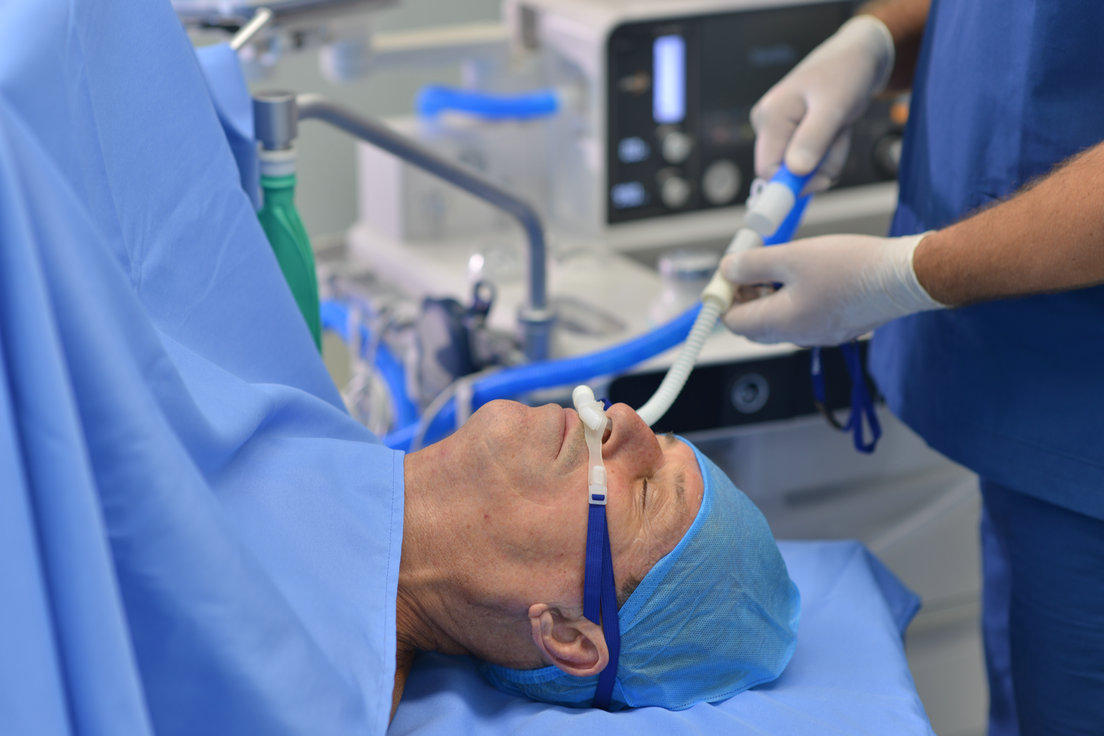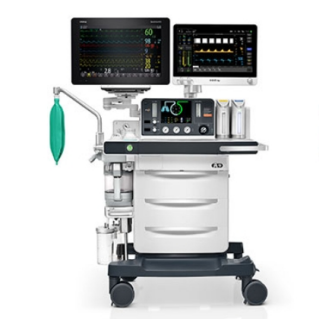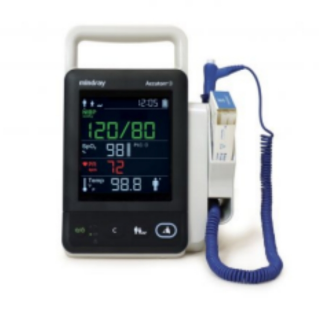
High flow nasal cannula (HFNC) therapy is an oxygen supply system capable of delivering up to 100% humidified and heated oxygen at a flow rate of up to 60 liters per minute and eventually higher .1 HFNC oxygen therapy is used as an oxygenation method during procedures in various clinical settings, including ICUs, Emergency Departments, Operating Rooms and during post-surgical care. This type of therapy is primarily used for patients who require respiratory support, such as critically ill patients and those with a difficult airway.
The use of High Flow Nasal Cannula in high-risk patients is critical for reducing the risk of hypoxemia, otherwise known as low blood oxygen. Preoxygenation using 100% oxygen before anesthesia induction is highly recommended to delay the onset of arterial hemoglobin desaturation during prolonged apnea .2 For difficult airway patients, HFNC for preoxygenation can further reduce the possibility of a hypoxemic event.
As the American Society of Anesthesiologists (ASA) continues to modify its recommendations for optimizing oxygenation in preparation for difficult airway management, it’s important to understand who difficult airway patients are, why HFNC is advantageous to these patients in comparison to conventional preoxygenation, and how anesthesia technology is advancing to more conveniently administer HFNC to these patients.
Conventional Preoxygenation vs. High Flow Nasal Cannula: What’s the Difference?
Conventional preoxygenation is used before a patient is intubated using a nasal cannula or mask and can deliver up to 15 liters of oxygen per minute. This amount of oxygen is much lower than the necessary amount patients with respiratory failure or difficult airways need to receive in order to avoid a hypoxemic event. HFNC supplies oxygen at a much higher rate of up to 60 liters per minute and is able to meet the requirement of heating and humidification in these patients where conventional preoxygenation cannot. Heat and moisture exchangers are helpful during anesthesia and ventilation to reduce the damage of the upper respiratory tract by heating and humidifying dehydrated inspiratory air, thus preventing any serious complications. 3
Difficult Airway Patients
Difficult airway patients can be categorized as any patient in which intubation will fail or that will be difficult to ventilate with a mask. This can be caused by a variety of factors, such as underlying health conditions, medical history, and the patient’s vital signs status during a procedure. However, since that which constitutes a difficult airway cannot be singularly defined, it is necessary that clinicians monitor the airway closely and determine a protocol to ensure the patient’s airway remains secure throughout the procedure. Some examples of difficult airway patients include:
- Bariatric patients: The World Health Organization (WHO) estimates that more than 300 million people are affected by the so-called “Globesity epidemic”. Morbidly obese patients have a reduced functional residual capacity with consecutively increased incidences of atelectasis (a condition where the lungs collapse partially or completely). In cases where ventilation/perfusion mismatch leads to hypoxemia by shunting, preoxygenation enhances the safety margin for induction of general anesthesia and placement of the endotracheal tube .4 For these types of patients, HFNC can help reduce atelectasis and hypoxemia.
- Obstetric patients: Failed airway management in an obstetric patient undergoing general anesthesia is associated with major sequelae (a pre-existing illness or injury leads to additional symptoms or illnesses) for the mother and/or fetus. Therefore, effective and adequate preoxygenation is recommended in all current major airway guidelines .5
- Critically ill patients: Continuous nasal oxygenation (low or high flow), is part of ‘Plan A’ in the first iteration of the Difficult Airway Society guidelines for tracheal intubation of critically ill adults .6 These patients typically require definitive airway management due to organ dysfunction or other manifestations of critical illness, including altered consciousness, respiratory failure, and shock. These and other pathophysiological states increase the risks associated with sedative hypnotic (i.e., induction) agents and their hemodynamic sequelae, apnea during tracheal intubation, and/or transition to positive pressure mechanical ventilation. Therefore, successful airway management in critically ill adults requires planning and execution of strategies that mitigate potential technical and physiological difficulties .7
ASA Recommendations for High Flow Nasal Cannula
The ASA recommends that oxygenation should be optimized during preparation for difficult airway management, unanticipated and emergency difficult airway management, and extubation of the difficult airway. It also recommends that operating rooms should consider the use of High Flow Nasal Cannula for patients at risk of desaturation during intubation, which is defined as oxygen saturation < 90% from the initial SPO2 of >90% or a decrease from a baseline of less than 90% .8 Patients who are at risk of desaturation during intubation include those with a difficult airway.

Benefits of Having High Flow Nasal Cannula Integrated with Your Anesthesia Machine
The ability to quickly administer oxygen at a high rate is essential for many patients undergoing anesthesia. Therefore, having an anesthesia workstation with integrated HFNC can benefit patients and clinicians by streamlining the administration of HFNC in the case of a potentially hypoxemic event.
The downside of not having HFNC integrated into your anesthesia machine is that HFNC must be administered from a standalone device that needs to be ordered by the Respiratory Department and delivered from the ICU and/or respiratory team. This provides a disadvantage as transferring the system can result in long wait times. Additionally, incorporating more dedicated Operating Room (OR) HFNC devices is costly and requires manual charting into the EMR. Having an integrated HFNC solution in your anesthesia machine results in more time and money saved for your OR.
Mindray’s A8 and A9 Anesthesia Workstations are the only machines on the market with HFNC integrated into the system, making it more efficient for anesthesiologists in the operating room. Standard HFNC is administered through a standalone device. Mindray’s A8 and A9 Anesthesia Systems offer a direct setting of total flow and O2 concentration with a maximum flow of up to 60 L/min. The built-in design, with no additional gas or power source, helps to remove clutter and save space and enables quick start-up for emergency situations to improve patient saturation quickly. Mindray’s Anesthesia Workstations with integrated HFNC adhere to the ASA’s latest recommendations.
The Mindray Difference
At Mindray, we believe in a better future for our clinicians and patients. Our newest A8 and A9 anesthesia platform embodies this philosophy by retaining traditional features while introducing disruptive technology to maximize patient safety, help improve patient outcomes, complement the way clinicians work best, and increase efficiency in the perioperative environment.
The A8 & A9 Anesthesia Workstations have been designed around clinicians, with deep insights into clinical workflow, aiding in reduced clinical workload and maximized safety. The A8/A9 feature integrated (HFNC) plays an important role in maintaining safe oxygen saturation in patients to help clinicians intubate more easily, especially for patients with poor oxygen saturation.
Mindray’s innovative A8/A9 platforms retain traditional features while introducing disruptive technology to ensure the safety of patients throughout the perioperative period, complement the way clinicians work best and increase efficiency in the operating room.

References:
- 1Weingart, S.D. and R.M. Levitan, Preoxygenation and prevention of desaturation during emergency airway management. Ann Emerg Med, 2012. 59(3):p. 165-75 e1.
- Benumof, J.L., Preoxygenation: best method for both efficacy and efficiency. Anesthesiology, 1999. 91(3): p. 603-5.
- Parmar V. Heat and moisture exchanger: importance of humidification in anaesthesia and ventilatory breathing system. J Indian Med Assoc. 2008 Aug;106(8):533-5, 537. PMID: 18975515.
- Heinrich, S., et al., Benefits of Heated and Humidified High Flow Nasal Oxygen for Preoxygen- ation in Morbidly Obese Patients Undergoing Bariatric Surgery: A Randomized Controlled Study. Journal of Obesity and Bariatrics, 2014. 1: p. 7.
- Tanoubi I, Drolet P, Donati F. Optimizing preoxygenation in adults. Can J Anaesth 2009;56:449‑66
- Higgs, A., et al., Guidelines for the management of tracheal intubation in critically ill adults. Br J Anaesth, 2018. 120(2): p. 323-352.
- Managing the Physiologically Difficult Airway in Critically Ill Adults | Critical Care | Full Text (biomedcentral.com)
- https://www.ncbi.nlm.nih.gov/pmc/articles/PMC4272932/#:~:text=Cricoids%20pressure%20is%20applied%20from%20the%20moment%20the,decrease%20from%20a%20baseline%20of%20less%20than%2090%25.




